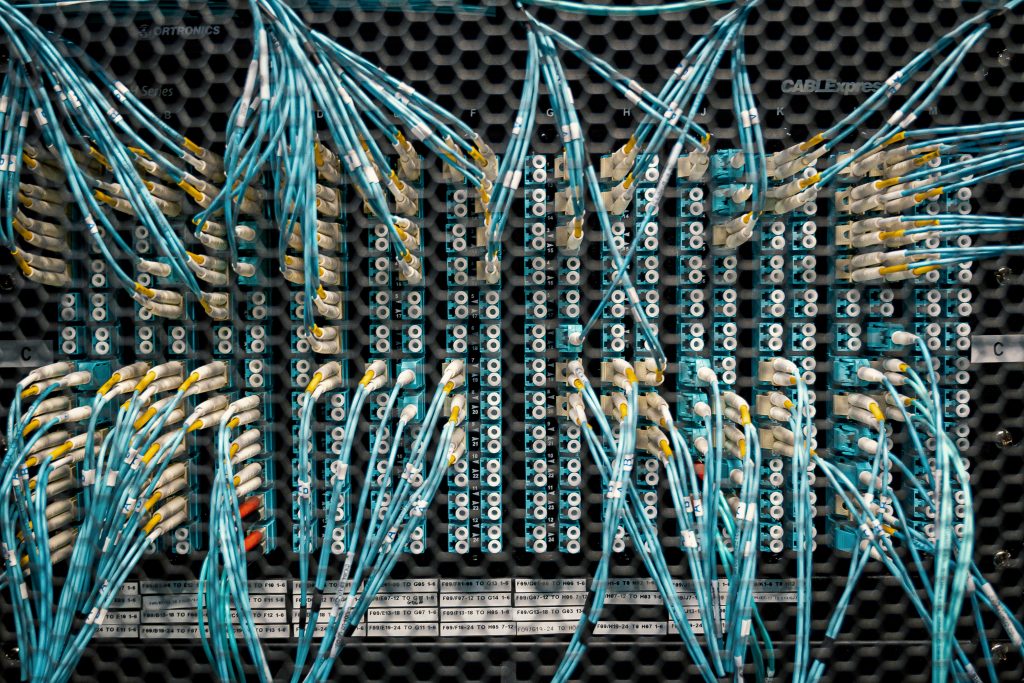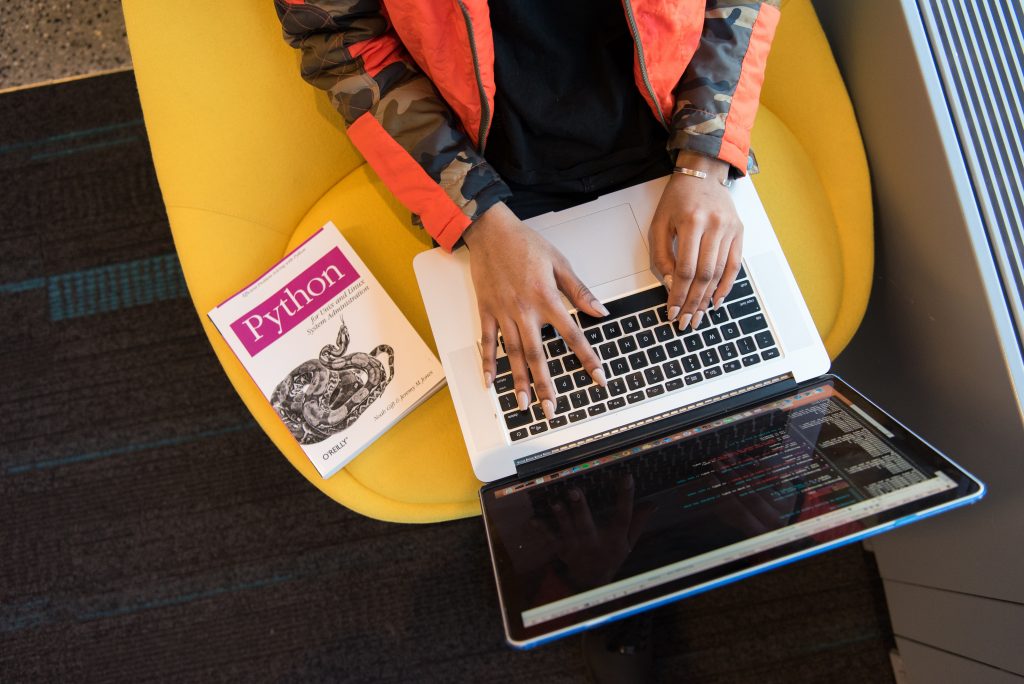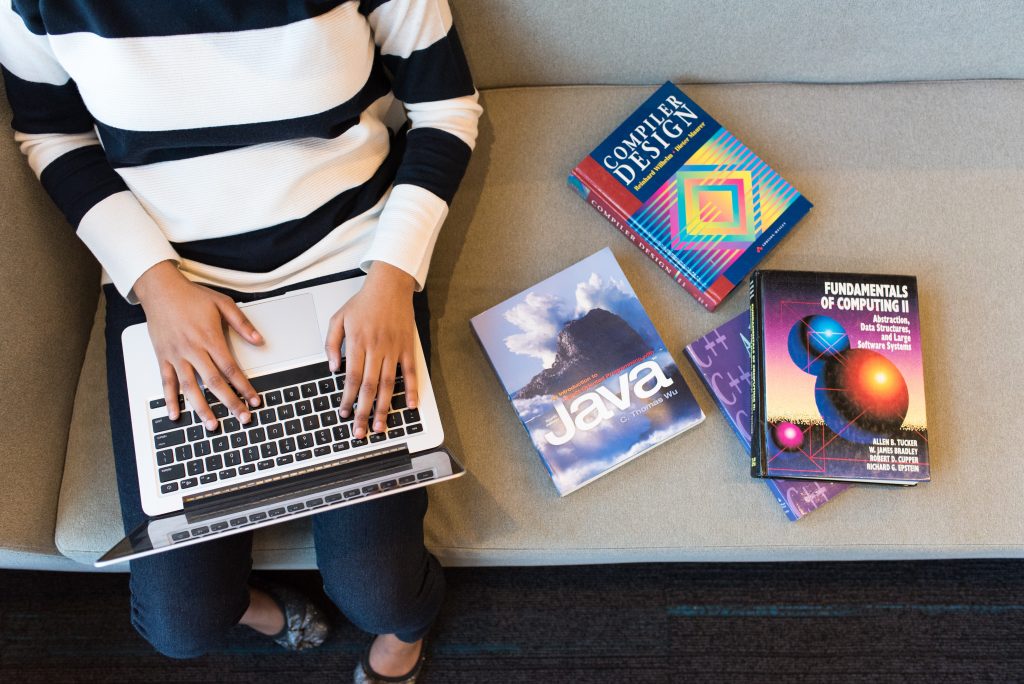The term Cloud Computing has been in use since the 2000s when telecom companies used this to denote information that was not relevant to the users. They used it as a metaphor for the public telephone networks which, to the user, were just a ‘cloud of information’. However, the concept of cloud computing dates back to the 1960s.
The idea is to rent access to computing power rather than buy it. Imagine you do not have enough space in your room but you know after a certain period of time certain things like old books, clothes, etc will be removed. For the time being you need the space to accommodate your belongings, so you rent a storage space.


Similarly, in cloud computing companies do not buy the mainframe where they save their information, instead, they rent it. It is a cost-effective, secure, and efficient method of computing. Since the data isn’t congested at one place but accessible at any required time, therefore, the services tend to be smoother for the user.
Cloud Computing is growing faster than a wildfire, with companies investing graciously in building a strong infrastructure of digital data. Almost one-third expenditure of IT industries is on cloud computing, the global cost is approximately $219.6 Billion. There are several benefits to cloud computing that is why tech giants like Microsoft are continuously encouraging it.


Security tools are constantly being invented to make it more secure. A company can buy storage space and secure it but this method, in the long run, tends to be more vulnerable than cloud computing. The service already specializes in monitoring and securing a company’s data, especially when it is moved to and fro from one cloud system to the other. Some companies may still be reluctant to share services used by its rivals also.
With a shift in investment paradigm, this issue is also getting diluted, although, a bit slowly. Companies realize that their IT budget can be made more economical by relying on such services. It is becoming Operating-expenditure oriented as opposed to Capital expenditure. Microsoft has taken a step towards making cloud computing services more secure by rolling out Azure- a platform promoted as “confidential computing”.
Hybrid Cloud can be called an intermediate as it allows to have Public Cloud and Private Cloud services where only a part of data can be accessed by everyone. It is a bit complicated though, and concerns for security are also many.


Two factors- Geopolitics and Data Sovereignty also pop up. If the data center and the user are poles apart or there is a lot of data traffic, then the user gets delayed information and the main objective of easy and efficient access gets defeated. The next thing is when companies are opting for the service from outside cloud computing source, they may not always be aware of the way the data is being processed or where it is being used by the cloud services. A good and transparent network is still desired in cloud computing.
Technology will always have its comforts along with its concerns. With the amount of work put in to improve cloud services it seems that very soon cloud computing will flourish even more than today.
Computers have become an integral part of our daily lives irrespective of the academic or professional field we belong to. To maintain compatibility with these gadgets it is necessary to communicate with them in their language of zeros and ones.
Programming languages help us to facilitate this process. In 2020, the already increasing graph of demand for professionals conversant in one or more computer languages saw a sharp rise owing to a major part of the world population working/ studying from our homes.
If you too are looking for a vocation in the concerned field or are curious to learn a computer language (because why not?), you can target some of the trending languages which will help you in your respective fields.


Python
Comparative to other languages, Python is easier to learn and swift in execution. The code or syntax is lucid and can be embedded. This means that other programming languages can be integrated into python. It is compiled simultaneously while the code is written so the final code can be run immediately. Python is also suitable for the Internet of Things or IoT development as the code is portable or can be run on various machines. Although other computer languages are also used for IoT development Python scripting, owing to its flexibility, security and simplicity are preferred.


Java
This is the most preferred computer language for IoT development. It works on a “Write once run anywhere” principle, i.e. a code written in Java on a device need not be compiled again on any other device (that is compatible with the language), it can be used as-is. It is majorly used for the development of android applications and enterprise-scale web applications (these are apps used by large enterprises, too complex for individuals to use or learn).


C
This is mostly the first or primary language that any computer student learns irrespective of the field he/ she chooses later. Even programmers learn it in their initial stages. It is clean, uses a simple set of keywords, has low-level access to memory, etc. Apple replaced C with Swift (another computer language) and certain other changes are being made day by day, yet C retains its popularity.


Golang
Pretty popular with the programmers, Golang is fairly similar to the C language in terms of its syntax and the fact that it is typed programming. It is developed by Google hence as expected from the IT giant, the language is more user-friendly. It can be used in distribution systems, cloud computing, and another large-scale programming.
These are a few languages that one can learn as a beginner or someone who wants to have a command over two or more computer languages. The more we are able to communicate our needs to our gadgets, the more-consumer-oriented they will become. These have become an almost natural part of the human habitat. A large portion of our ecosystem is dependent on our gadgets for better functionality and multi-tasking.


With the coming times, learning a computer language will become a regular part of our school curriculum. It already is, as students learn JAVA in their High School only. Soon, like coding, Computer Languages will also enter the regular syllabus as knowing how to communicate with our fellow species isn’t enough.
We have all heard about the Black Friday sale with huge discounts on our favorite products but most of us know little about the cultural history of Black Friday. After Thanksgiving is celebrated, the Sunday following it is informally named the Black Friday festival. It was a tradition that began in the United States.


The year is 1869, September 24. Two Wall Street bureaucrats decide to execute their nefarious and mutual pre-planning to accelerate the free-fall of the market. Jay Gould and Jim Fisk, have bought as much gold as they can and are waiting patiently for the pieces to fall in place. As expected, the price of gold rockets sky-high, and the U.S. economy is moving head-on towards bankruptcy. this is the first historical story related to the celebration of Black Friday.
To procure the incurred losses, the retailers sell their merchandise at low prices on a daily basis except on Fridays they offer a hefty discount on the marked price. When the budget and expenses are accounted for, the retailers notice that people tend to spend more when offered discount even though the discounted Friday price (termed as “selling in the black”) and the regular, lowered price (termed as “selling in the red”) are almost the same. The expenditure was most around Thanksgiving.


It is said that from here, the concept of Black Friday, being officially celebrated as a shopping spree came up.
There are two other historical anecdotes that might have sparked the idea. One is a rather bleak picture of the culture of Black slaves being bought by the plantation owners in the early 1800s. Hence, the name Black Friday. Another one narrates the day being related to the uncontrolled mob in Philadelphia which surged into the city causing roadblocks during the Army–Navy football match during the 1950s.
It was a trying task for the security officials. They worked long shifts without breaks and had a tough time regulating the over-enthused crowd and football fans with shop-lifters enjoying amidst the city conundrum. This term “Black Friday” caught on really well even though it has certain negative connotations attached to it.


The official authorities of Philadelphia tried promoting “Big Friday” in 1961 but to no efforts. Sometime, around the 1980s, the retailers decided to opt for the first story mentioned here. They wanted this day to have a positive effect. For this, they began re-using the term “Black Friday” which was already known nation-wide and around the globe as well.
In 2020, this is representative of the festive spirit of the entire U.S. after Thanksgiving and the approaching Christmas. Along with it, several other sales have sprouted and what once was a single day bonanza has become a four day festival of holiday shopping. Even software stores have joined in with Small Business Saturday/ Sunday extending up to Cyber Monday.


The stories related to this day, however grey, have proved that there is a silver lining in the clouds. One may feel doomed at the moment but dawn is always near after the long dark. Black Friday, hence, is symbolic of this spirit of good over evil.
On 26 November 1949, the Constituent Assembly of India adopted the Constitution of India, which was effective from 26 January 1950.
The general idea of a constitution originated from the writings of the Greek philosopher, Aristotle. In his work Politics, Nichomachean Ethics, he uses the word “constitution” in a variegated sense. The essence being, any state or nation irrespective of its inner turmoil or instability from outside threats, essentially has a set of rules to govern its people (citizens).


The framing of the Indian Constitution began on December 6, 1946, with the formation of the Constitution Assembly and the compendious task reached completion on 24 January 1950. The entire process took 2 years, 11 months, and 18 days with Rs. 6.4 Million as a total expenditure. Bhimrao Ambedkar also called the Father of the Indian Constitution had contributed most in the making. He was appointed Chairman of the Drafting Committee.
In between the timeline of drafting the constitution, there were many significant events, most important being the adoption of the Indian National Flag on 22 July 1947.


A compilation of the features from various sources including features from the constitution of almost ten countries- America, Australia, Britain, Canada, France, Germany, Ireland, Japan, South Africa, and the Soviet Union; the Indian Constitution is unique. It is the second-longest constitution in the world comprising 395 articles (in 22 parts) and 8 schedules.
Our constitution; the idea of which sparked from the initial wave of socialism in 1934, led by leaders like M.N. Roy for the welfare of the society; tells the citizens of India about the Fundamental Rights, Duties, the Directive Principles of State Policy, Political structure of the government, Ruling of the various governments- State and Central, functions of the Election Commission and much more.
The original hand-written copies of the Constitution are kept in helium-filled cases in the Library of Parliament House.


Even the date for celebrating Constitution Day i.e. 26 November holds symbolic value. In 1930, on the same date, Purna Swaraj was publicly issued, and for the next 17 years, it was celebrated as Indian Independence Day.
A country’s constitution is only a written set of rules. It holds significance because it is the symbol for all citizens of equality, justice, free speech, and his recognition as a citizen of that country. It is a source of foundation in the actions a common man, the government and the judiciary take to uphold the nation’s integrity. It is a hope that people hang on to.
On Constitution Day, also called the National Law Day or the Samvidhan Diwas, we remember the lesson of secularism, brotherhood, and a sense of duty the constitution teaches us. We recall the tedious task completed beautifully by our iron-willed leaders and derive inspiration to uphold the values laid down by them. We, as a nation, also strive for progressive growth for which the government makes amendments whenever required.
The Indian Constitution was not typed or printed but hand-written with beautiful illustrative art by Shantiniketan.


As citizens, we can celebrate this day by educating ourselves about the importance of the constitution, and by having an overview of its content. It is not possible to memorize the document but the key point to remember is that we must “Ask not what our country has done for us. Ask, what we have done for your country.” By observing our share of rules only we can fully respect the constitution and the nation.
The world of cinema has not only given us entertainment and fun but also has taught us valuable life lessons as well. They are one of the most relatable pieces of information available. However, an over-exaggeration and distortion of the authentic portrayal might dilute their positive impact on society. This is where documentaries come in.


Undiluted and not colored with the maker’s personal biases, Documentaries are an engaging way to portray an issue or even a concept. They can take a political, social, cultural, and personal stance as well. Educational documentaries fall in this category. They are specially made to appeal to a larger audience in order to promote and spread their ideas and awareness. They range from issues on society, culture to interpersonal relationships, and social media. They bring into light a bigger picture that is inherently connected to our existence and thus, affected by our actions and doings.
There has been a major paradigm shift in the central ideas of these documentaries. They have taken into account the important ideas of the times and have focused extensively on understanding them and spreading awareness. For example, in contemporary times, “social media”, “internet”, “artificial intelligence” have emerged as the major themes of such documentaries.



However, they are timeless classics and hold some kind of relevance in each era. Beyond Era is one such documentary. The fact that education has become a bubble that needs to be filled rather than the process of unleashing one’s potential, is the major focus of this piece of art. It focuses on the reductionist approach of the current education system, i.e., high priority given to grades/marks, everyone expected to excel academically, etc.
What would happen if we give a learning environment to students and let them figure out their interests and what they would like to become in the future. This documentary is a great way to understand the theme of transforming our education system. Schools are not just institutions for imparting education and knowledge but are also seen as places where students grow personally as well.
However, issues of bullying, mental health, and comparison hamper the basic doctrine of our education system. Another documentary titled


Project Happiness focuses on this exclusively.
It throws light on the prevalent mental health issues that our students are facing at school like depression, anxiety, bullying, etc. It poses to its viewers a very important question: Is the current education system in line with the happiness indices of students?
This visual piece follows three groups of students from different continents for a year to understand their quest for happiness. This documentary has served as the source of inspiration for millions of individuals around the world. Other educational documentaries include He Named Me Malala which focuses on the political and social initiative one has to take to gain rights for equality in education at schools; The Bad Kids which talks about the changes a good teacher can bring to the lives of their students; NOVA: School of the Future where the focus was the gap that our education system is facing today and ways to fill in the gap with new technologies.


In India, documentaries such as The Story of India, Placebo, The World Before Her, Kareena are particularly inspiring and great pieces to learn about our culture and nation. Most of these documentaries can be streamed on different platforms such as Netflix and Amazon Prime, while some of them can be found for free on Youtube.
Stream now and Stay Inspired!
In olden times, when the natural sciences hadn’t developed, people were easily fooled by tricks or natural phenomenon that were occurring at a natural level. Often, in history we have seen people being misled to believe basic chemistry with black arts and witchcraft. Modern science isn’t that receded. Although, there are some misconceptions still prevalent in the world of chemistry.
Being healthy means actively avoiding artificial chemicals.


In the blind race of going organic, people often beget uncertainties. When it comes to chemicals, the word itself is stereotyped as something to be avoided. There are certain man-made chemicals that are beneficial for us and even help in maintaining our health.
Physicians prescribe artificial vitamin supplements for better health, like, Vitamin A, Vitamin D, etc. People are opting for a Vegan lifestyle that does not accommodate a vital component- Vitamin B12. It is usually compensated from animal food or dairy products– both of which aren’t included in Veganism. Hence, B12 is taken as a supplement. It is wise to not believe the marketing tricks of companies that endorse organic products by downplaying artificial ones. Think about how their “chemical-free products” are preserved when we know natural goods are perishable.
An acid eats material away and only an acid can burn you.


Mainstream cinema makes us believe that only acids are harmful. This sends out a message that all bases are safe to use. This is untrue and can even cause accidents. Those who do not have a good understanding of how a base works, especially students, who are working in the lab for the first time can be a bit careless with proper handling of basic chemicals. For this, they can be made aware of the properties of bases. An extremely strong base can be more harmful than a weak acid.
pH is the measurement of the degree of acidity of a chemical solution.


Danish biochemist Soren Peter Lauritz Sorensen in 1909, first described pH as, a logarithmic measure of the hydrogen ion concentration of an aqueous solution. Since acids have a higher hydrogen ion concentration, it is commonly considered that acidic strength and high pH value are the same things.
However, out of two solutions with pH 6 and pH 12, the one with pH 12 is a highly basic (and more harmful) solution while the one with pH 6 is a weak acid (comparatively less harmful). pH value hence is the calculation of acidity, basicity, and neutrality of an aqueous solution.
The endpoint or equivalence point of a titration is always at pH 7.


Titration measures the concentration of an unknown solution that reacts with a solution of known concentration. The equivalence point in a titration is the point at which the chemical reaction in the titration mixture ends.
The endpoint is the point in the titration where the indicator changes its color. Usually, the endpoint lies almost close to the equivalence point but it should be kept in mind that the reaction of both solutions may not have completed fully and the indicator may change color anyway.
There are many more misconceptions or myths in chemistry. They will continue to grow because everyone has a different perspective of understanding the concepts. It depends on the individual, especially a student of chemistry that what efforts are being put in to stay aware and updated.
Have you ever wondered how some people get things done while some need extra from the daily 24 hours? It is possible that this happens due to the difference in workload. Another reason can be that they are using their time more effectively: in other words, have good time management skills.


Time management is the ability to use the available time productively, efficiently with still some time left for yourself. You could say it is an art of timing. Although it is easier said than done.
These skills are essential because it not only increases our productivity but also opens opportunities to do more, explore more, and learn from variegated experiences. The first step is to prioritize your tasks according to the deadline, importance, and apparent time it may need.
Ask yourself if the task is ‘Urgent’ or ‘Important’? Urgency relates to how readily can something be done in a given amount of time, while the important tasks, if left unfinished, may have serious consequences for you and sometimes others.
- Answering the phone is urgent.
- Going to the dentist regularly is important.
- Checking social media is neither of the two.
“Time spent on self-care and happiness is not time wasted.”


We have seen, read, and heard a number of times that we should keep rewarding ourselves and not forget that working isn’t life, it is a part of life. The important thing people forget is that for this notion to be true, you have to work first. Equating mismanagement of your time with self-care is retrogressive and inhibits creativity.
Staying focused is a Sisyphus’ task. You build focus to do a particular task and get things done and end up losing focus again and yet again. This repetition isn’t the consequence of unbridled fancy, it is actually really normal. You will lose focus time and again and may even lag in the completion of your tasks. Acceptable. Really!
Focus and time management go hand in hand. Losing sight of one leads to an automatic loss of the other. We need to analyze our distractions and reduce them as much as possible. Apart from daily goals we also have certain social responsibilities and duties that have to prioritized or are sometimes unavoidable. Hence, tasks get delayed.
We can however chalk out a plan to not get strayed by the engagements we already know of. For example, we already know about the upcoming festive seasons, so, these moments can be fully enjoyed by proper allotment of time to each task. You need to take a break during these holidays.
To maintain focus, relax first.


Don’t blame yourself, or worse, someone else if you lag. Calm and see how the situation can be handled, what can be your next priority. Next thing, never ponder over past mistakes and repent. Instead, learn from them.
Best time management doesn’t come from reading someone else’s suggestions, books advocating simple tricks, blogs (including this one). It comes from personal experience. You are the best judge of yourself.
Focus and practice are key to productivity and accomplishment of goals. The problem is sustaining your primary focus on your important tasks. We get caught up in some odd job or an emergency comes up. Sometimes, its just our attitude of doing things that makes us lose our focus.
Here we have for you (and for us too!) some simple tips to maintain focus and get that job done!
De-clutter!


Organize those files staring at you since the beginning of time. Clean your desk of unnecessary food receipts, tangled earphones; sort out your pen stand of other paraphernalia like a yo-yo, buttons, magnets and anything that isn’t a writing instrument doesn’t belong in your pen stand. De-cluttering your work/study space gives you a sense of satisfaction of having done something useful. Even under stress when you cannot think properly, you need to calm down and clear your thoughts. Similarly, before trying to focus, clean, and organize your table.
Break! Break! Break!


In chemistry, scientists are constantly trying to break down the elements and compounds into the smallest particle to understand them better. A similar strategy helps you in completing a task efficiently and without feeling burdened. A single drop forms an ocean!
Analyze your work and distribute it into small tasks and complete them one by one. While doing so, keep a track of your progress also so that you know how much you have completed and what is still left to e done in the time you have left.
Self-appreciation!


Only after you have finished one of your Sisyphus tasks, give yourself some time before beginning the next one. Reward yourself with mini-treats. They could be anything: playing a favorite video game, reading a novel, watching TV, munching on your favorite snack, etc. This keeps you motivated and you get the clarity or calmness required for brainstorming for new projects.
Round-the-clock!


Schedule your tasks wisely and according to your capacity. Keep some time for yourself, for interacting with your loved ones, and employ a technique that does not keep you busy but productive. All work and no play makes Jack a dull boy! There is no need to be a work-a-holic. With proper and realistic strategy you can work out a schedule suited as per your daily chores and accordingly keep up with it. The important thing to remember here is that do not let your work pile-up. You may think it’s just a day’s delay but this attitude gradually becomes counter-productive.
Discourage Distractions!


Just 5 minutes of Instagram, 5 minutes of texting, just 5 minutes of this, and 5 minutes of that. Congratulations! Your subscription for 24 hours in a day has expired. Does this seem to be your schedule lately? This 5-minute attitude leads to the loss of precious time and energy that could have been employed in other significant tasks.
Whenever you feel distracted, ask yourself if the distraction is really worth it? Are 5 minutes of social media get your tasks done? If yes, then carry on but if the answer is no then actively avoid whatever distracts you. This is a habitual practice that cannot be accomplished in a day but it with regular effort and being conscious about your activities does help in focusing more on the tasks at hand.
It is better said than done and done as soon as possible. These are just pointers to keep you focused. Every person has a unique working style, so it is best if you retrospect and do what suits you well.


It is better said than done and done as soon as possible. These are just pointers to keep you focused. Every person has a unique working style, so it is best if you retrospect and do what suits you well.
Continuous classes mar our learning capacity. Several studies show that the human brain is most efficient between 9 to 11 in the morning, especially for learning because our critical thinking capacity and sense of conscious awareness are most active. Although, this learning capacity decreases with age, interest, diversity in responsibility, change in lifestyle, and other reasons.
In a world of multi-tasking, it has become essential to hone our skills to the best of our capacity. We generally see that working professionals are actively seeking out people that have single-field specialization-cum-experience and a secondary skillset in related or non-related fields.


For this, it is necessary to pay attention to quality education, strong foundational learning with some space for the body to relax. This problem is resolved in online education. One thing that needs to be kept in mind is that online education as an EdTech platform and online classes conducted by certain educational institutions are two different things.
EdTech online education platforms are core electronic, technically backed up educational platforms. They have a mature and fully grown ecosystem of smooth online classroom experience. From website design till their reach as mobile applications are fully co-ordinated on a virtual level. They have a strategy that provides the student, the educators, the web-designers, etc a chance to participate fully.
Online classes that have recently shifted from conventional physical classrooms are just adapting to the change in the mode of education. They may or may not be up-and-running as expected.



The advantages of choosing online education are multi-faceted. With the growing trend of education focused on skill development, students are not bound by the school curriculum. They can choose from a variety of subjects available to them and shape their talent. They do not have to exhaust extra resources like transportation costs, time taken to reach, expenditure on casual attire (tuition and coaching do not have a uniform), lodging expenses if the student has to move away from his hometown, etc.
All course content with proper content supervision, content update, separate doubt-solving sessions, focus on individual rather than the bulk of students, space for creative teaching methods along with the integration of technology, and much more is provided by mode of online education.
New online education platforms with novel concepts advocating the amalgamation of traditional and modern classrooms are coming up. A major factor is if the student is a school-going kid, the parent can see for themselves the quality of teaching and basic classroom etiquette, during live sessions.


Mostly, recorded teaching sessions are available, accessible anytime from anywhere, and can be watched repeatedly in high-quality audio/visual formats. UPSC, IIT-JEE, NEET, CLAT, etc- all exams can be prepared and prepared well through online mode of education.
Even the government has recognized the need to develop online education as an alternative education platform so that no student is left behind who wants to pursue education. There are provisions in the NEP 2020 that focus on this key issue of education.
Change is the only constant and the advent of online education platforms is a revolutionary change in the e-learning scenario. There is no undue pressure or stereotype that online education should be the only choice but credit should be given where due. It has made our life simpler and 24 hours can be effectively utilised.
Therefore, online or offline, a good teacher needs no publicity and students will always prefer the teacher over the mode of education. So, it is better to let go of our inhibitions regarding the future of online education and accept it as a part of our day-to-day life.






